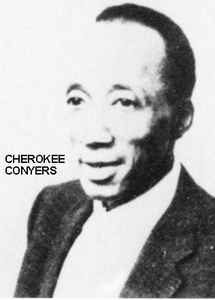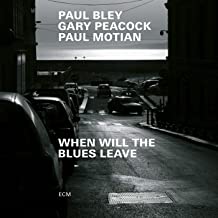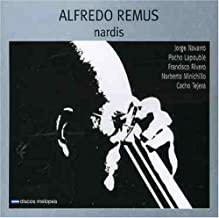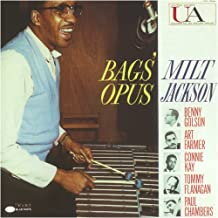
Three Wishes
Cherokee Conyers answered Nica inquiry of what his three wishes would be by telling her:
- “Good health.”
- “A nice home.”
- “Happiness. No! I want happiness secondPut the “nice home” third.”
*Excerpt from Three Wishes: An Intimate Look at Jazz Greats ~ Compiled and Photographed by Pannonica de Koenigswarter
More Posts: baroness,history,instrumental,jazz,music,pannonica,three,wishes

Daily Dose Of Jazz…
Paul Bley was born Hyman Paul Bley on November 10, 1932 in Montreal, Quebec. His adoptive parents were Betty Marcovitch and Joe Bley, who owned an embroidery factory. When he was five years old he studied violin, but by seven he took up the piano. He received a junior diploma from the McGill Conservatory in Montreal when he was 11 and at thirteen he formed a band which played at summer resorts in Ste. Agathe, Quebec. His teenage years saw him he played with touring American bands, including Al Cowan’s Tramp Band. In 1949 at the start of his high school senior year, Oscar Peterson asked him to fulfill his contract at the Alberta Lounge in Montreal. The next year he left Montreal for New York City and Juilliard.
The Fifties saw Paul returning to Montreal, establishing the Jazz Workshop and inviting Charlie Parker, he played and recorded with him. Returning to New York City he hired Jackie McLean, Al Levitt, and Doug Watkins to play an extended gig at the Copa City on Long Island. He did a series of trio recordings with Al Levitt and Peter Ind, toured as Lester Young and the Paul Bley Trio, and performed with tenor saxophonist Ben Webster at that time. He then conducted for bassist Charles Mingus on the Charles Mingus and His Orchestra album and in 1953, Mingus produced the Introducing Paul Bley album for his label, Debut Records with Mingus on bass and drummer Art Blakey. A 1954 call from Chet Baker put him with the quintet at Jazz City in Hollywood, California that led to a tour with singer Dakota Staton.
Staying in Los Angeles he evolved his trio into a quintet with young avant~garde musicians Dave Pike, Don Cherry, Ornette Coleman, Charlie Haden, and Billy Higgins. Through the Sixties, he worked with Jimmy Giuffre, Sonny Rollins, Coleman Hawkins, Bill Dixon, Roswell Rudd, Cecil Taylor, Archie Shepp, Carla Bley, Michael Mantler, Sun Ra, and others. The Seventies had him and Carol Goss founding the production company Improvising Artists. The label issued Jaco, the debut recording of Pat Metheny on electric guitar and Jaco Pastorius on electric bass, with Bley on electric piano and Bruce Ditmas on drums. The label would release IAI records and videos of Jimmy Giuffre, Lee Konitz, Dave Holland, Marion Brown, Gunter Hampel, Lester Bowie, Steve Lacy, Ran Blake, Perry Robinson, Naná Vasconcelos, John Gilmore, two solo piano records by Sun Ra, and others. Bley and Goss are credited in a Billboard cover story with the first commercial music video.
Through the Eighties and Nineties, he continued to record, tour prolifically through Europe, Japan, South America, and the United States. in 1993 a relative from the New York branch of the Bley family walked into the Sweet Basil jazz club in New York City and informed him that his father was actually his biological parent. In the new millennium, he became a part-time faculty member of the New England Music Conservatory.
His last public performances were in 2010 playing a solo piano concert at the La Villette Jazz Festival in Paris, followed by a duo with Charlie Haden at BlueNote in New York City during a full moon. Pianist Paul Bley passed away of natural causes on January 3, 2016, at home in Stuart, Florida, at the age of 83.
More Posts: bandleader,composer,history,instrumental,jazz,music,piano

Daily Dose Of Jazz…
Alfredo Remus was born on November 9, 1938 in Argentina. He learned to play the double bass and by 1964 was part of the ensemble recording the historic album La Misa Criolla by Ariel Ramírez. He has performed and/or recorded with Paul Gonsalves, Vinícius de Moraes, Maria Bethânia, Enrique “Mono” Villegas, Gato Barbieri, Mercedes Sosa, Tony Bennett, Ariel Ramírez, Víctor Heredia, Alberto Cortez, Trio Los Panchos, Raphael, Cuarteto Zupay, Dyango, Leonardo Favio, Sandro, Susana Rinaldi, and Antonio Carlos Jobim, among others.
He was regularly participated in a series of improvisation and casual folk experimentation at the house of Eduardo Lagos, named humorously by Hugo Diaz as folkloréishons, the jazz jam sessions with Astor Piazzolla, Diaz, Oscar Cardozo Ocampo, Domingo Cura, and Oscar López Ruiz, to name a few. Double bassist Alfredo Remus, the interpreter of tango, jazz, Argentine folklore, and bossa nova, continues to perform.
More Posts: bandleader,bass,history,instrumental,jazz,music

Requisites
Bags’ Opus ~ Milt Jackson | By Eddie Carter
Milt Jackson steps into the spotlight to begin this morning’s discussion with one of my favorite albums from 1959, Bags’ Opus (United Artists UAL 4022/UAS 5022). This is my album to listen to when reading or relaxing because the music is so soothing, I can listen to it endlessly. Here, the vibist is leading an exceptional sextet consisting of Art Farmer on trumpet, Benny Golson on tenor sax, Tommy Flanagan on piano, Paul Chambers on bass, and Connie Kay on drums. My copy used in this report is the 1976 Japanese Stereo reissue (United Artists GXC-3135), and the album opens with the leader in ballad mode on Ill Wind by Harold Arlen and Ted Koehler. It was written in 1934 and performed by vocalist Adelaide Hall in their final show at The Cotton Club. Milt’s vibes are delicately discreet on the melody and as the featured soloist, he tells an exquisitely tender story matched by the sensitive accompaniment of the rhythm section into a gorgeous finale.
Blues For Diahann is Jackson’s tribute to actress, model, singer, Diahann Carroll, and the only original of the session. It opens with a jubilant intro by the rhythm section and a collective theme by the sextet. Golson takes off first with some straightforward blowing. Farmer doesn’t let up the pace on the next reading with a spirited solo. Flanagan follows with a dazzling display of his virtuosity, and Chambers gives a spicy performance that’s worth the wait. Kay begins the next reading with some brisk brushwork in a shared statement with Jackson. The leader wraps up everything with a short workout ahead of the close. Afternoon In Paris by John Lewis was written in 1949 and was first recorded by Phineas Newborn Jr. on the album, Here Is Phineas-The Piano Artistry of Phineas Newborn Jr. (1956). Lewis made it the title song for his 1957 release with guitarist Sacha Distel, and the group takes this tune for an easy ride with five soulful statements by Milt, Benny, Art, Tommy, and Paul.
Benny Golson’s timeless 1957 jazz standard, I Remember Clifford, was written to honor the memory of trumpet player Clifford Brown who alongside pianist Richie Powell and his wife Nancy perished in an auto accident a year earlier. It opens Side Two delicately with the front line featured on the melody and reprise. Bags gives this evergreen all the poise and elegance it deserves on a sublimely beautiful performance backed by the trio. Thinking of You was composed by Harry Ruby and Bert Kalmar in 1927, and debuted in the Broadway show, The Five O’Clock Girl that year. It was also featured in the 1950 film, Three Little Words. Art takes the lead on the gentle opening chorus with Milt and the rhythm section providing the lush background. He continues on the first solo with an intimately moving interpretation. Bags comes in next to add a touch of sensuous beauty to the closing statement ahead of Art’s return for the tenderly expressive coda.
Benny Golson wrote Whisper Not in 1956 while a member of Dizzy Gillespie’s Big Band. It’s one of his most popular tunes and has been a signature song of Golson’s since its inception. Leonard Feather wrote lyrics for Anita O’Day who recorded it in 1962. The sextet begins the melody at an easy beat with an irresistible toe-tapping melody. Jackson cruises at a comfortable speed with impeccably-crafted lines. Farmer works the next solo using his mute with a firm tone and relaxing informality. Golson gets the next nod for an infectious groove that just won’t stop, and Flanagan sparkles on the final reading before the sextet reassembles to take the song out. Bags’ Opus was produced by Jack Lewis and engineered by Tommy Nola whose work can also be found on Argo, Atlantic, Blue Note, Cadet, Contemporary, Jazztime, Mercury, Riverside, and Verve to name a few. The album has a solid soundstage with an excellent definition from each instrument bringing the musicians from your speakers into your listening room.
Milt Jackson was one of the extraordinary musicians of jazz whose consistency on record is unequaled. He played and recorded with Cannonball Adderley, Ray Charles, Miles Davis, Dizzy Gillespie, Coleman Hawkins, Wes Montgomery, and countless others as a leader, sideman, and on many records as a member of The Modern Jazz Quartet. He was given the nickname Bags by a Detroit bass player, referring to the bags under his eyes. I’ve been a huge fan of his ever since seeing him live in 1972. On Bags’ Opus, Jackson and his colleagues offer an album of easy listening jazz that any fan of Post-Bop should consider a must-have for their library!
~ Afternoon In Paris (Atlantic 1267); Anita O’Day and The Three Sounds (Verve Records V-8514/V6-8514); Here Is Phineas-The Piano Artistry of Phineas Newborn Jr. (Atlantic 1235/SD 1235) – Source: Discogs.com
~ Ill Wind, I Remember Clifford – Source: JazzStandards.com ~ Afternoon In Paris, Thinking of You, Whisper Not – Wikipedia.org ~ © 2020 by Edward Thomas CarterMore Posts: choice,classic,collectible,collector,history,instrumental,jazz,music,vibraphone

Daily Dose Of Jazz…
Dara Tucker was born on November 8th in Tulsa, Oklahoma, the third of seven children to music minister and gospel recording artist, Doyle Tucker, and singer Lynda Tucker. Starting out singing harmony at the age of 4 with her brothers and sisters, she began playing the piano at age 8, and traveled the country singing with her family for most of her childhood. The family spent time in Spokane, Washington; Detroit, Michigan; Fayetteville, Arkansas; Pasadena, California; and Baltimore, Maryland. Along with her siblings, they were known as The Tuckers bringing forth their rich harmonies and seamless blend.
Receiving her degree in International Business and German Studies, after graduating, Tucker worked for a few years in the field of International Business. She then moved to Interlaken, Switzerland to study German while aupairing. It was while living in Switzerland in 2003 she began songwriting, and the next year moved to Nashville, Tennessee to pursue a career as a singer/songwriter.
She recorded her debut album All Right Now in 2009 featuring Great American Songbook standards. Two years later she dropped her second album Soul Said Yes blending r&b, jazz, and gospel and featured seven-string guitarist, Charlie Hunter.
A third release, The Sun Season in 2014 was recorded in Astoria, Queens, New York included ten originals penned by Dara. The session had guitarist Peter Bernstein, pianist Helen Sung, drummer Donald Edwards, John Ellis on saxophone, Alan Ferber on trombone, and bassist Greg Bryant. She would go on to record another studio album and live date.
Vocalist Dara Tucker, named Jazz Vocalist of the Year at the 2016 and 2017 Nashville Industry Music Awards, and cites her influences including her parents as Mel Tormé, James Taylor, Stevie Wonder, and Nancy Wilson, continues to compose, perform and record.
More Posts: bandleader,composer,history,instrumental,jazz,music,vocal




